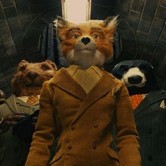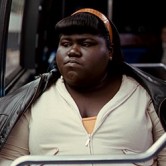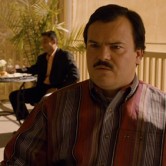Movie Review: THE FALL (2008)
![]()
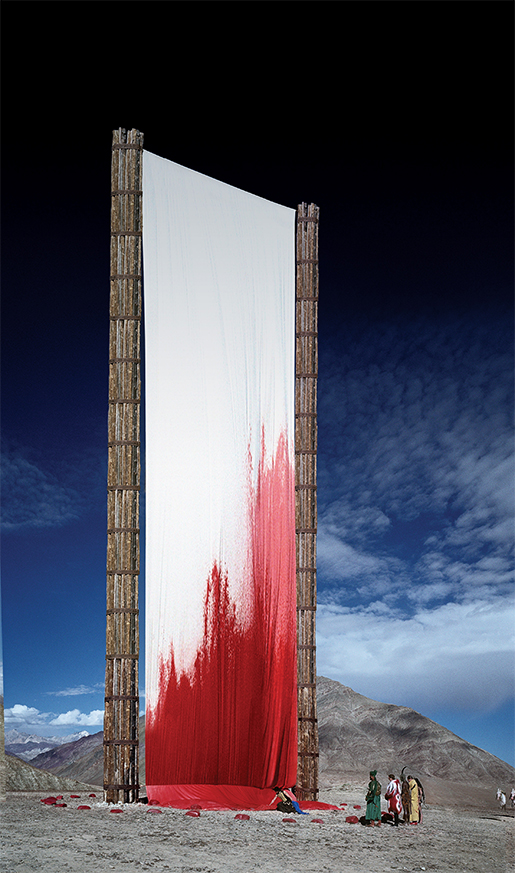
Alexandria In Wonderland
Once Upon A Time, Six-year-old Alexandria (Catinca Untaru), one of the injured patients in a Los Angeles hospital circa 1920, wanders the limey and creamy walls looking for something to help pass the time. She has a doughy and lovable face that is genuine, animated, and suggests a definite sharpness of thought. She comes across Roy Walker (Lee Pace), an American stuntman working in the Hollywood “flickers”, who is now being treated for his paralyzed legs from an occupational hazard. He is welcoming and befriends the little Romanian girl. Her presence distracts him from an inky cloud of depression.
Their bond grows when he tells her an epic story that is silly yet strong, perplexing yet straight-forward, fantastical yet damned. Her own imagination manifests, reinterprets, and even edits his words into a hodgepodge of visually radical planes, structures, and characters. A whole new universe takes us away from the confines of the hospital and into a land of eye candy.
The Fall is not the best film of the year, but it is one of the most special. While watching it, I realized that I have never seen this movie before. What I mean is that most of the movies I’ve seen are a variation on other films I have seen. Out of the cookie-cutter machine a la Edward Scissorhands, a strange butterfly-shaped cookie has escaped the line: The Fall is a genuine original. What a fresh breeze it is to have a filmmaker throw out that unwritten book that rules out exploration and approaches deemed too strange and melodramatic for mainstream expectations. Here is a work by an artist who exercises his liberties selfishly in the best sense of the word, but not without purpose.
I did, however, come up with a few films that vaguely resemble its surface. One is Rob Reiner’s The Princess Bride (1987) where a guardian entertains a sick child in bed with a fantasy story. The exotic, foreign and colorfully vibrant environments of The Fall reminded me of the Arabian fantasy The Thief of Baghdad (1940), an Alexander Korda production. The most recent one is Pan’s Labyrinth (2006), one of the very best films of this decade, resembling The Fall in spirit but not emotionally. The Guillermo del Toro masterpiece (the adult equivalent) has different motives than The Fall (the child equivalent) and should not be felt the same way. Ophelia comes to conclusions about human nature that Alexandria is too young to even conceive.
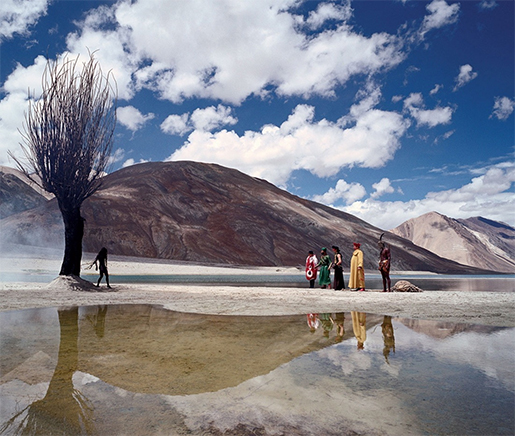
For seventeen years, Tarsem traveled the world playing location scout for his dream film – a seed growing inside his mind. It was inspired by the Zako Heskija film Yo Ho Ho, which was made in Bulgaria and released all the way back in 1981. In that time he worked with great success as a director of music videos and commercials for large conglomerates, earning millions of dollars for his visionary talents. Many directors in advertising would often muse that they would personally finance their own feature film (always a would-be masterpiece) until time caught up to snuff that claim from becoming a reality. Not Tarsem. After losing his long-time girlfriend and potential family, he turned his savings into making art. A movie will substitute a child for now. David Fincher (Zodiac, 2007), one of the film’s producers and no stranger to advertising, told Tarsem “You happen to be the fool that has done it”.
A year after appearing at the Telluride Film Festival back in 2006, every distributor was too timid to pick it up. It was Roy Andersson’s Songs From The Second Floor (2002) all over again. When released (more like saved) by amigos Fincher and music video-turned-wunderbar filmmaker Spike Jonze (Being John Malkovich, 1999), The Fall was granted a limited theatrical release last Spring. Living in Vancouver wasn’t much fun where no screening of The Fall was held. I know people who were looking forward to it and are still traumatized by the experience of Tarsem Withdrawal.
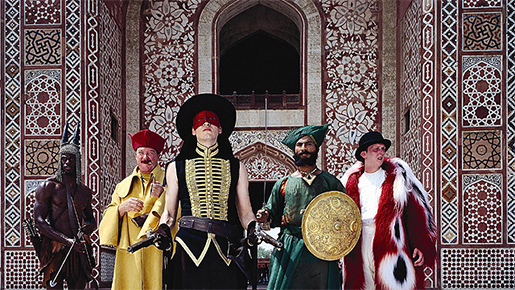
The make-believe story involves a band of unique men who each have just cause to seek out and destroy the near-omnipresent villain Governor Odious (Daniel Caltagirone). Our heroes include The Masked Bandit who leads The Indian (Jeetu Merma – perceived by Alexandria that he is from India in place of Roy’s Native American), Otta Benga (Marcus Wesley) the Ex-Slave from Africa whose expertise is archery, Luigi the Italian Explosives Expert (Robin Smith – who reminds me of the ruler of the Moulin Rogue! played by Jim Broadbent), and would-be evolution theorist Charles Darwin (Leo Bill) and his pet monkey Wallace. There is snide play with the characters for those familiar with the rival-collaboration between Darwin and Alfred Russell Wallace.
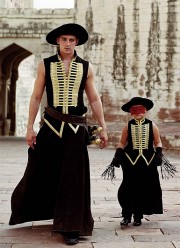 Throughout the told story, the characters are loosely perceived as looking like people Alexandria has seen before. The ominous henchmen are in a guise similar to the darkly glad X-Ray engineers who roam the hospital corridors. The Masked Bandit is originally played by Alexandria’s father (Emil Hostina) who is gap-toothed (Fun Fact: In Chaucer’s time, a woman with a gap-tooth possessed a sexy attribute.) until she informs Roy her dad is dead. For the duration of the story, the role of The Masked Bandit is played by Roy. Governor Odious, when revealed later, stands in as a rival of Roy’s, an otherwise humane man, whose depravity is greatly exaggerated.
Throughout the told story, the characters are loosely perceived as looking like people Alexandria has seen before. The ominous henchmen are in a guise similar to the darkly glad X-Ray engineers who roam the hospital corridors. The Masked Bandit is originally played by Alexandria’s father (Emil Hostina) who is gap-toothed (Fun Fact: In Chaucer’s time, a woman with a gap-tooth possessed a sexy attribute.) until she informs Roy her dad is dead. For the duration of the story, the role of The Masked Bandit is played by Roy. Governor Odious, when revealed later, stands in as a rival of Roy’s, an otherwise humane man, whose depravity is greatly exaggerated.
Back in reality, about midway into the movie, it becomes clear that Roy’s cliffhangers are motivated by his need to persuade Alexandria to fetch him enough medicine to commit suicide with. Not only is Roy a handicap, he is trapped in the private hell of being deliriously in love with a woman who has given her heart to another man. Roy’s bouts of depression and utter pessimism first occasionally and then ultimately influence his fantasy world into darkness. There is a funny-sad scene where Roy is cobbling down Morphine pills, while Alexandria innocently picks up those he dropped so he can consume them.
Vivid and luridly odd costume design by Eiko Ishioka (Mishima, 1985) marks her second distinguishable collaboration with Tarsem after The Cell (2000). The fantasy sequences were shot in over two dozen countries in South America, Europe, Asia and Africa. Tarsem and cinematographer Colin Watkinson realize phenomenal visuals with wise framing and subtle dissolves placed creatively in strange architecture and landscapes. There is so little in the way of computer rendering that what looks gorgeous beyond reason is actually just photographed. The Voodoo of Location, a philosophy by German maverick Werner Herzog, is played out fruitfully as opposed to the tiresome green screen approach.
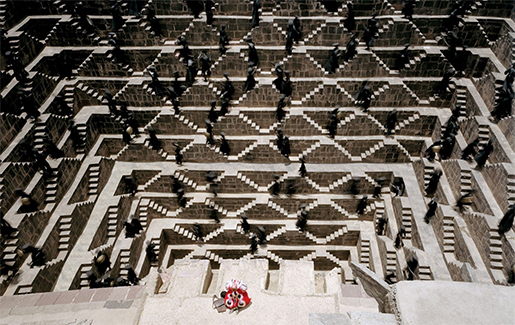
The Fall does an outstanding job of creating authentic visuals effects by hand with real light while filming. The reality of the shot is grounded; manipulated before the camera and not after. Without relying heavily on computerized graphics, the visual landscapes and effects possess an unforced and substantive effect on us. It is more exhilarating to realize an image that carries weight and is actually tactile in the real world: A stone is more valuable than a dream.
Tarsem and his composer Krishna Levy get great mileage out of Beethoven’s Symphony No. 7 in A major, Op. 92, II. Allegretto. This instrumental score hasn’t been used so effectively since its placement over the near-devastating finale of Gaspar Noé’s Irreversible (2002). It can also be heard over the scene in Stephen Herek’s Mr. Holland’s Opus (1995) where Mr. Holland (Richard Dreyfuss) lectures his class about Beethoven continuing to compose masterfully despite the loss of hearing. Meanwhile Mr. Holland can’t help but tearfully contemplate the loss of his own newborn son being deaf: “Well… Beethoven wasn’t born deaf”.
That music introduces and bookends The Fall beginning with a lusciously photographed sequence in black-and-white depicting the horrific aftermath of a stunt turned tragic. The compositions, its heightened values, and dreamy slow-motion capturing a rescue on train tracks suspended high over a body of water. The steam-engine train blows a long puff of bright white smoke against the warm gray sky like a man-made cloud.* The last sequence is a poignant montage of death-defying stunts accumulated from silent pictures starring Chaplin, Keaton, and Lloyd whom Alexandria figures it must be Roy doing all that work.
The Main Title Sequence of THE FALL
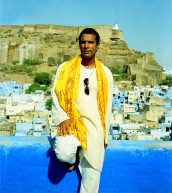 The Fall is one of those rare films that doesn’t come to you, but you must come to it. It doesn’t fulfill the conventional needs we usually come to expect from a feature film. It comes bearing gifts you might not have prepared for. Remember that trailer for Julie Taymor’s Across The Universe that promised us “the most original, exhilarating, spectacular, groundbreaking motion picture of the year!” The Fall, for the most part, actually capitalizes on that promise this year. Most people will turn away from it, the same who demand more originality in film and are shocked when they see something like The Fall. Even if Tarsem made The Fall for himself, those looking for a soaring adventure under an enveloping scale of visual delight can reap the benefits. This one isn’t meant for everybody and that’s more reason to treasure it.
The Fall is one of those rare films that doesn’t come to you, but you must come to it. It doesn’t fulfill the conventional needs we usually come to expect from a feature film. It comes bearing gifts you might not have prepared for. Remember that trailer for Julie Taymor’s Across The Universe that promised us “the most original, exhilarating, spectacular, groundbreaking motion picture of the year!” The Fall, for the most part, actually capitalizes on that promise this year. Most people will turn away from it, the same who demand more originality in film and are shocked when they see something like The Fall. Even if Tarsem made The Fall for himself, those looking for a soaring adventure under an enveloping scale of visual delight can reap the benefits. This one isn’t meant for everybody and that’s more reason to treasure it.
ACROSS THE UNIVERSE (2007) Trailer
THE FALL (2008) Trailer
*A more thorough look into the making of the Main Title Sequence of The Fall can be found at the website Art of the Title Sequence.
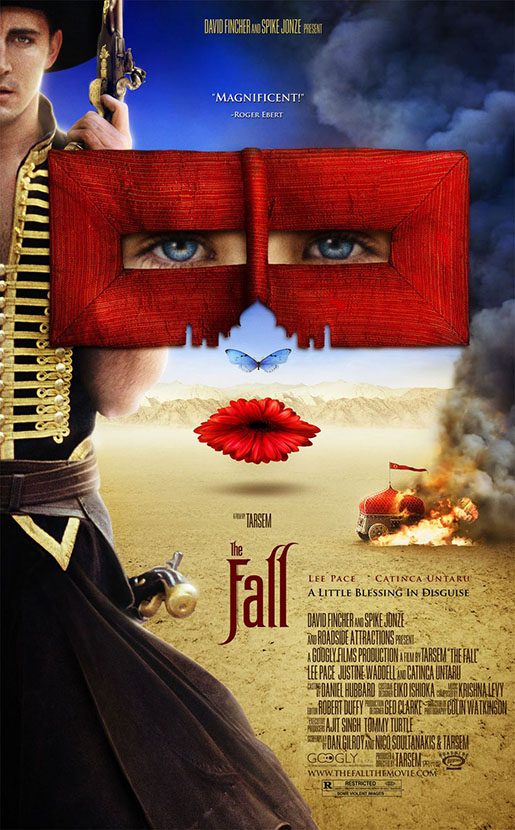
© 2008 – 2024, CINELATION | Movie Reviews by Chris Beaubien. All rights reserved.














